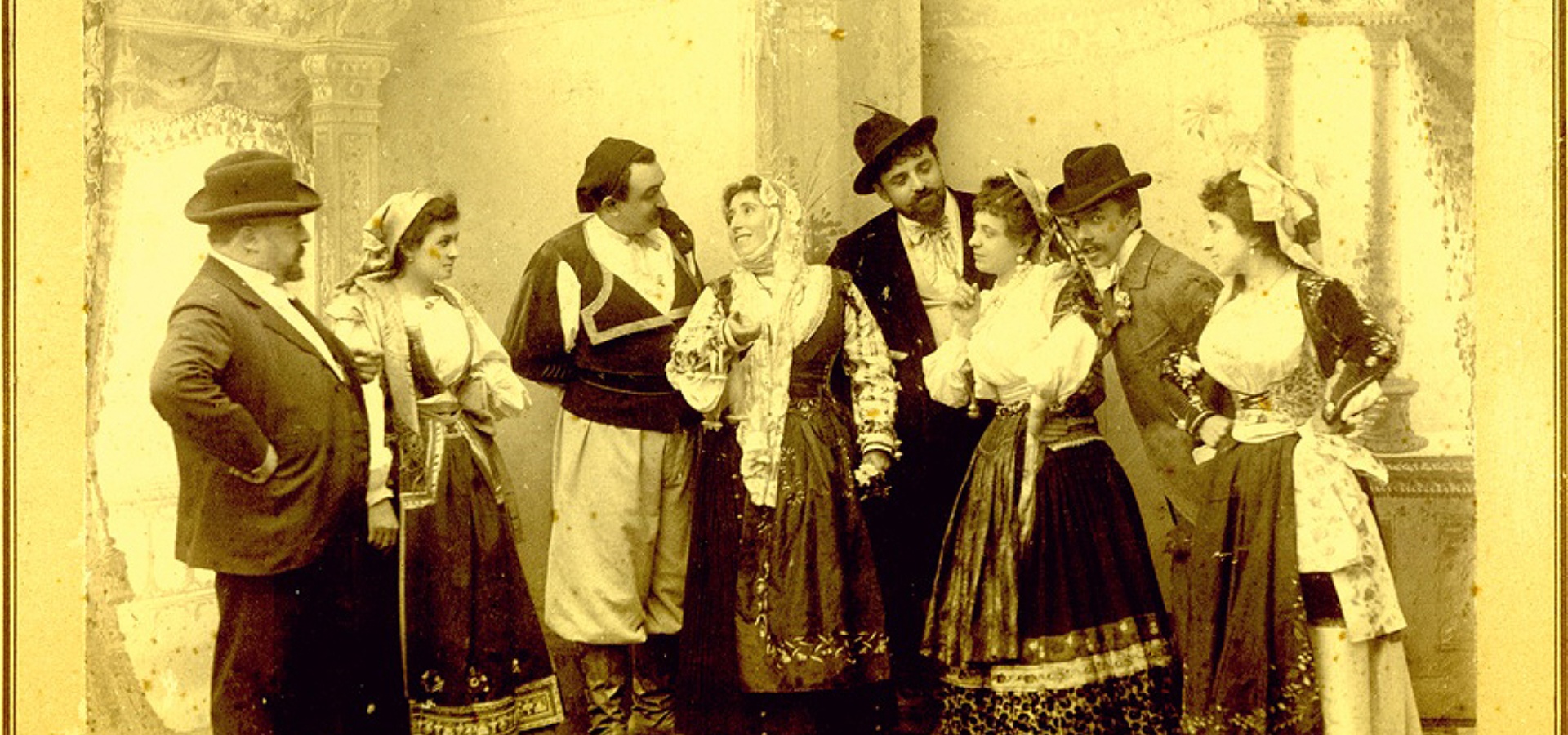Priamo Gallisay (b. Nuoro, 19 October 1853–d. Ozieri, 30 July 1930) was an Italian musician and artist.
Priamo Gallisay
Description
In 1867, he attended the Collegio di Vallelunga in Florence, where he distinguished himself for his musical skill and performance as a student.
Giorgio Asproni, a Nuoro politician and friend of Gallisay’s father, followed his progress and became a kind of mentor.
He continued his education in Switzerland at the prestigious Institut Chateau du Lancy, graduating with honours in 1871.
He completed his training at the Conservatorio di Santa Cecilia in Rome, where he became a Royal Academician in 1896 and decided to concentrate his efforts on composition.
In 1876, after returning to Sardinia, Gallisay married Battistina Tola, with whom he had four children. He devoted himself entirely to teaching music and enjoyed a Bohemian lifestyle. This led to economic difficulties and he gradually squandered his inheritance.
Despite his talent as a composer and a range that spanned varied music genres, he never achieved national recognition.
However, in Nuoro, he enjoyed the admiration of his illustrious fellow townswoman Grazia Deledda, who introduced him to Angelo de Gubernatis. Through this connection, Deledda’s Mattinata di marzo set to music by Gallisay was published in the magazine Vita Italiana in 1895.
In 1896, Priamo Gallisay composed music for Rosella, based on the novel Don Zua by Antonio Ballero, and convinced Pasquale Dessanai to write the libretto for the opera in Italian.
Although it was a hit with the audience at the Teatro Sociale in Varese in October 1897, it was panned by the critics.
Tired and suffering ill health, he retired to Ozieri, where he spent the last years of his life.
He died at the age of seventy-seven on 30 July 1930.
 Nuorese Cultural District
Nuorese Cultural District





